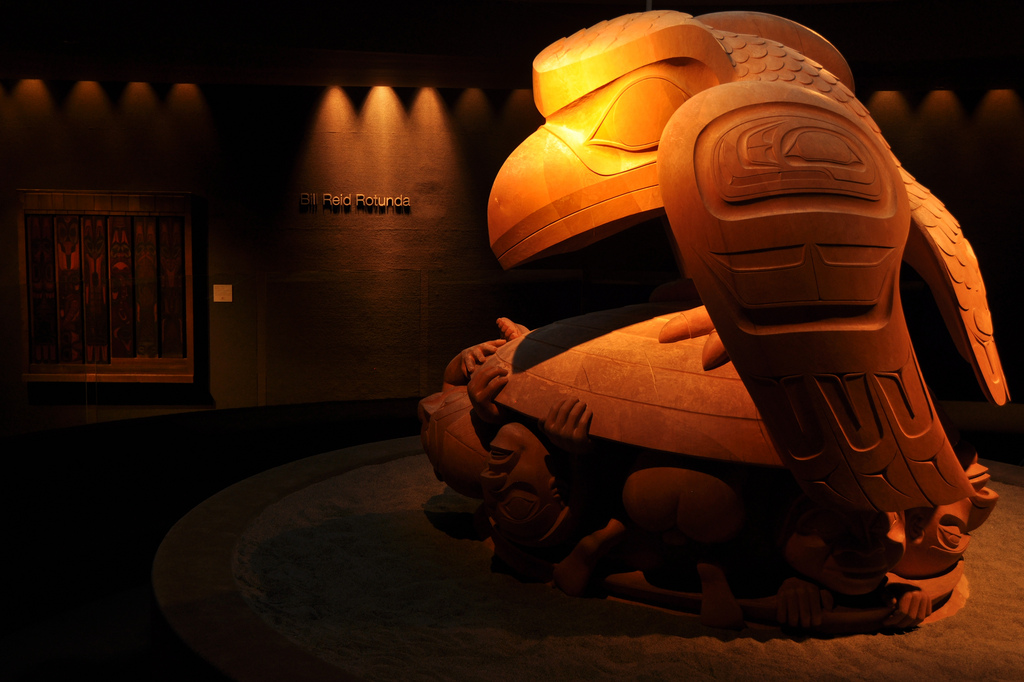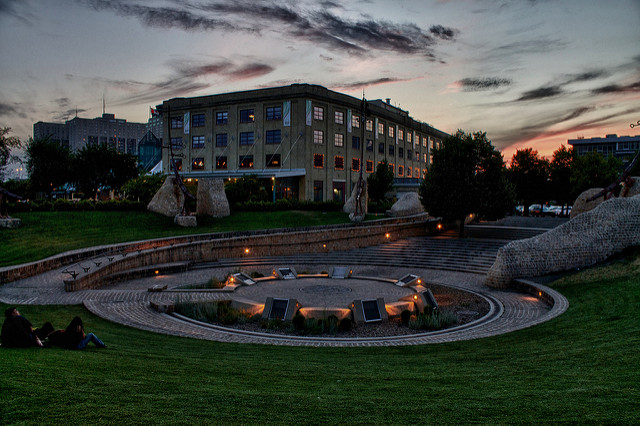To non-fans, ballet may be only girls in puffy skirts leaping and twirling with guys in tights. But to the balletomane, ballet is grand spectacle and the beauty of story told through graceful physical movement.
Canada''s premier ballet company is the National Ballet of Canada (NBC), which debuted on November 12, 1951. The company is defined by lavish productions of traditional story ballets, such as Swan Lake, Sleeping Beauty and The Nutcracker. The story of the NBC's inception is as fraught with melodrama and backstage temperament as any ballet.

|
| Frank Augustyn and Karen Kain in a National Ballet of Canada production of Sleeping Beauty, 1979 (photo by Andrew Oxenham) |
Ballet lovers Sydney Mulqueen, Pearl Whitehead and Aileen Woods recognized the need for a national company and initiated the NBC's founding. They were inspired by the Winnipeg Ballet's success and Britain's Sadler's Wells Ballet.
Before the National Ballet, performance opportunities in Canada were limited to the annual Canadian Ballet Festivals. Promising dancers had to leave the country. By 1950 the dreams of dancers and enthusiasts, including Boris Volkoff and Gweneth Lloyd, had become tangible plans. Volkoff directed a promising troupe in Toronto and Lloyd was the Winnipeg company''s choreographer.
Celia Franca, gifted dancer, ballet mistress and choreographer from London, was invited to the 1950 Festival to consider forming a professional national company. Volkoff might have accepted the challenge, but was passed over. After observing Canada's' ballet standards, Franca commented, "I think you need me here.
The sequence of events leading to Franca''s inauguration as the NBC's founding artistic director remains unclear. An undated note addressed to Whitehead indicates that Franca was asked by Volkoff's associate, Stewart James, to be ballet mistress for an unidentified director of a proposed company. On October 19, 1950, before Franca attended the Festival, Woods wrote her that the national company would benefit more by having Franca "as its Producer and Director as well as ... its Ballet Mistress.
Woods' letter disputes the common interpretation that Franca accepted Volkoff's offer, then manoeuvred him out of the position as artistic director.
Other documents indicate a fracas between the principal players. Woods had corresponded with Ninette de Valois, Sadler's Wells' director. De Valois, with Marie Rambert, had worked with Serge Diaghilev, the Russian impresario from St. Petersburg credited with shaping western ballet. De Valois and Rambert established the English tradition that came to dominate the world's vision of ballet.
Lloyd and Volkoff apparently shared the aspiration of heading a national company and tried to position themselves to step into the spotlight. De Valois recommended that someone with unquestionable artistic ability and "an objective distance from the existing circumstance direct the proposed company. A national ballet could not be an extension of an existing company, such as Volkoff's or Lloyd's. De Valois' advice was the least controversial solution to a delicate problem.
Franca's rift with Lloyd and Volkoff became melodramatic. Franca followed Diaghilov''s artistic tradition. Lloyd had not had a professional performing career; she had gone directly into teaching and choreography and had little experience with Franca's formative influences. Volkoff, trained in Moscow, had danced everywhere it seemed, including a Shanghai nightclub. Franca considered Volkoff's teaching techniques "old-fashioned Russian training. He thought she represented "the very tidy English-governess school of dance.
Franca insists that she tried to maintain good relations with Lloyd and Volkoff. An unused masthead for the proposed company lists Franca as artistic director, Volkoff as resident choreographer and Lloyd as artistic consultant and choreographer. The hypothetical management structure suggests that positions were ascribed to avoid offending Lloyd or Volkoff.
After vigorous debate by the board over inviting Lloyd to choreograph a ballet, Lloyd's abrupt refusal suggested that she considered the invitation "too little, too late. Lloyd intensified her support of the Winnipeg Ballet and severed her association with the NBC.
Volkoff taught some classes for the National Ballet before its debut performance. Subsequently some of the ballet's principal dancers took private classes at his studio. Relations between Volkoff and the NBC deteriorated over the years; though Volkoff lingered on the fringe awhile, his bitterness and disillusionment became as public as Lloyd's.

|
| Greta Hodgkinson in James Kudleka's acclaimed production of The Firebird (photo by Cylla Von Tiedmann). |
Despite artistic temperaments, insufficient funding and too few classical dancers, Franca developed a well-schooled repertory company that has gained international acclaim. The NBC has nurtured such talents as Karen Kain, Frank Augustyn and Veronica Tennant. Franca left the NBC in 1974, but the company still retains the character she bestowed upon it during her 23 years as artistic director.

 Share on Facebook
Share on Facebook Share on X
Share on X Share by Email
Share by Email Share on Google Classroom
Share on Google Classroom


